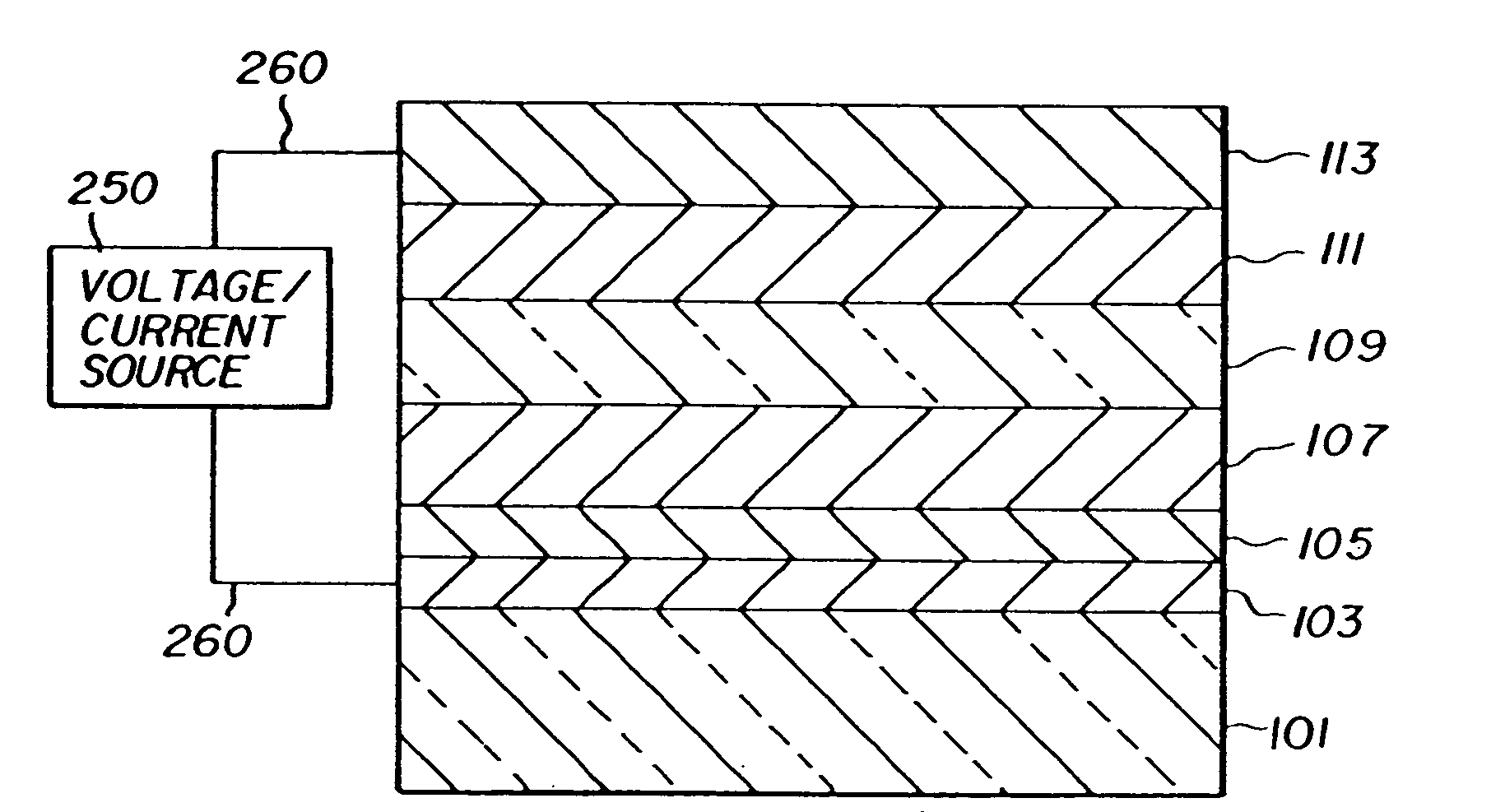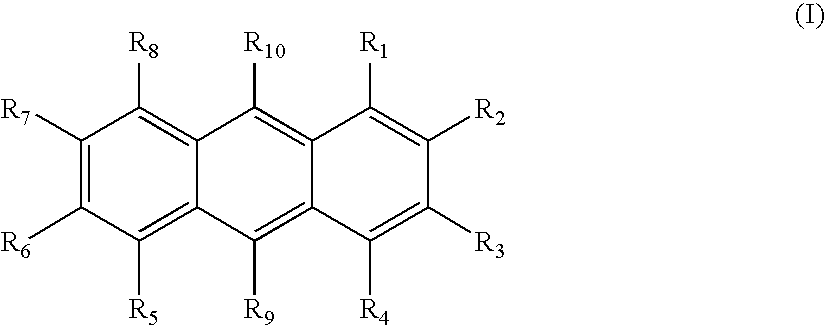Electroluminescent device with anthracene derivative host
a technology of anthracene and host, applied in the direction of discharge tube luminescnet screen, other domestic articles, natural mineral layered products, etc., can solve the problems that their performance limitations have represented a barrier to many desirable applications, and achieve the effect of improving operational stability
- Summary
- Abstract
- Description
- Claims
- Application Information
AI Technical Summary
Benefits of technology
Problems solved by technology
Method used
Image
Examples
example 1
Preparation of Inv-1
[0136] a) Preparation of 9-(2-naphthyl)anthracene. 9-Bromoanthracene (12 g, 46 mmol, 1 eq) and 2-naphthalenboronic acid (8.0 g, 46 mmol, 1 eq) were combined in 100 ml of toluene and the resulting mixture degassed by sonication for about 15 min. Bis(triphenylphosphine) palladiumdichloride (0.110 g, 0.095 mmol, 0.2%) was added and the resulting mixture was thoroughly stirred under nitrogen while 100 ml 2M Na2CO3 were added and the mixture heated to reflux via heating mantle. The reaction was left to reflux overnight. The reaction was cooled to room temperature at which time solid began to precipitate. The organic solid was isolated by filtration, washed with water, then air dried to yield 11.4 g (80%). Additional extraction of the organic, layer with methylene chloride followed by drying over MgSO4 and concentration, yielded another 2 g of product, for a total of 94% yield. [0137] b) Preparation of 9-bromo, 10-(2-Naphthyl)anthracene. 9-(2-Naphthyl)anthracene (14 g...
example 16
Comparative EL Device
[0155] Example 16 was fabricated in the same manner as Example 2, with the exception of part c). A 37 nm light-emitting layer of Alq was doped with a green dopant. These materials were co-evaporated from tantalum boats. Herein, doping percentage is reported based on volume / volume ratio. The specific dopants, percentages and host thicknesses are indicated in Table 4.
examples 17-21
Inventive EL Devices
[0156] Examples 17-21 were fabricated in the same manner as Example 16, except that the Alq was co-evaporated together with a host part of the invention, at various amounts (total thickness of the two hosts and dopant was 37.5 nm). The specific dopants, percentages and host thicknesses are indicated in Table 4.
TABLE 4Significant advantage in stability of a green dopant L53 when a co-host of the invention is used (Examples 16-21)LuminanceT50Inv-1%EfficiencyYieldLoss %calculatedTypein AlqL53%(W / A)(cd / A)CIExCIEy(h)(h)Example 1600.60.0559.380.3040.65324 (340 h) 978 hComparativeExample 17200.60.0518.670.2970.65319 (340 h)2681 hInventiveExample 18400.60.05910.00.2930.65418 (340 h)7103 hInventiveExample 19600.60.0528.660.2900.65016 (340 h)2811 hInventiveExample 20800.60.0426.770.2880.64116 (340 h)3387 hInventiveExample 211000.60.0395.960.2710.61017 (340 h)3082 hInventive
[0157] The data in Table 4 shows a significant improvement in the stability of L53 when a co-host ...
PUM
 Login to View More
Login to View More Abstract
Description
Claims
Application Information
 Login to View More
Login to View More - R&D
- Intellectual Property
- Life Sciences
- Materials
- Tech Scout
- Unparalleled Data Quality
- Higher Quality Content
- 60% Fewer Hallucinations
Browse by: Latest US Patents, China's latest patents, Technical Efficacy Thesaurus, Application Domain, Technology Topic, Popular Technical Reports.
© 2025 PatSnap. All rights reserved.Legal|Privacy policy|Modern Slavery Act Transparency Statement|Sitemap|About US| Contact US: help@patsnap.com



